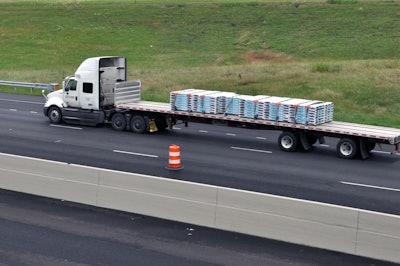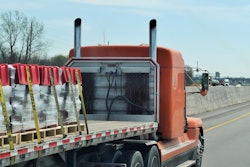The brightest spot in owner-operators’ 2017 income was flatbed – a good sign for trucking, construction and the economy at large.
Flatbed clients of financial services provider ATBS had an average net income of $70,477. That’s more than $10,000 above the firm’s 2017 average for all its thousands of owner-operator clients.
 ATBS flatbed clients had average 2017 net income that was more than $10,000 above the firm’s average for all its clients.
ATBS flatbed clients had average 2017 net income that was more than $10,000 above the firm’s average for all its clients.“Flatbed usually leads us out of a freight recession,” says ATBS President Todd Amen. “I think that’s what happened last year with housing, construction, industrial production, etc., all picking up.” Construction starts and spending have seen good gains in recent years and continued growth is forecast for this year.
The first time the average net income of all ATBS clients topped $60,000 was 2015, at $61,167. It dropped to $59,669 in 2016, then rebounded to $60,182 in 2017. “Most of the net income gains came in the fourth quarter as freight and rates picked up,” Amen says.
ATBS averages for independents and dry van haulers in 2017 were close to $60,000, but reefer haulers averaged only $49,267. Overdrive Senior Editor Todd Dills notes that with many fleets’ conversions to electronic logging devices completed or under way during 2017, “reefers were much more likely to hit the ELD-detention quagmire, thus more susceptible to real income hits than vans, as dock time eats up the clock.”
Amen agrees: “Reefer shippers and receivers are the most abusive of drivers’ time.”
Among other operational trends during 2017, he noted:
* Fuel was up about 5 cents per mile overall, but revenue offset that by rising 7 cpm.
* Miles dropped slightly, likely as a result of ELD implementation throughout the year that curtailed many drivers’ productivity.
* Maintenance costs remained flat, at about 10 cpm.
As the predictions of a strong 2018 for trucking materialize, so do increased concerns about a driver shortage. While that’s common when the economy rebounds, more factors point to a more severe shortage, analyst Gordon Klemp told my colleague Linda Longton: strong economic growth, a tight overall labor market, and diminished productivity due to the ELD mandate.
Up to now, even years after the recession ended, anemic demand has “masked” the severity of the driver shortage, said Klemp, who heads the National Tranportation Institute, which monitors owner-operator and company driver compensation. “We haven’t had a robust economy since 2003-2005,” he says.











